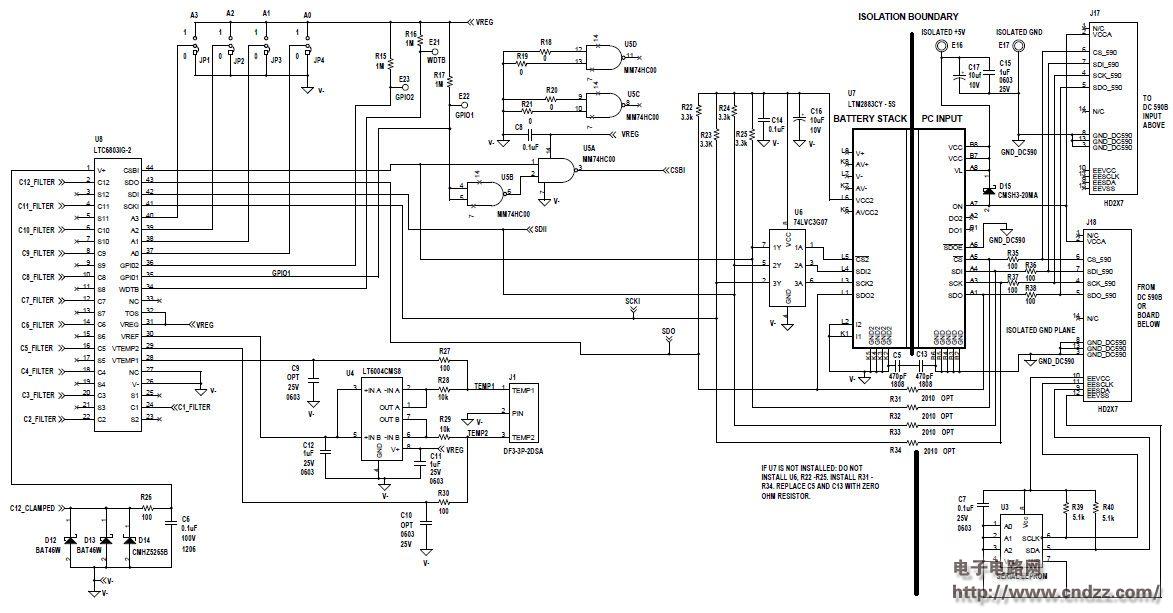Summary:
The demo board DC2064A is based on the high-efficiency bidirectional multi-cell battery pack balancer LTC3300-1 and the multi-cell battery pack monitor LTC6803-2.
The LTC3300-1 is a fault protection controller IC for transformer-based bidirectional active balancing of multi-cell battery packs. The device integrates all relevant gate drive circuitry, high-accuracy battery sensing, fault detection circuitry and a rugged serial interface with a built-in watchdog timer.
The LTC6803 is the second generation of a complete battery monitoring IC with a 12-bit ADC, a precision voltage reference, a high voltage input multiplexer and a serial interface. Each LTC6803 capable of measuring up to 12 series of batteries or supercapacitors voltage. Multiple LTC6803 devices can be stacked to monitor the voltage of each cell in a long string.
This article contains design files, demos, and schematics for the demo board.

Schematic diagram of the DC2064A demonstration board


DC2064A demonstration board circuit diagram
See the uploading documentation for details (click to download)
Solar Charge Controllers manage voltage and current from solar panels to batteries, preventing overcharging and optimizing battery life for reliable energy storage.
Usage:
Solar charge controllers are used in off-grid solar power systems, such as solar street lights, solar water pumps, RVs, boats, and remote cabins. They are also used in grid-tied solar power systems with battery backup to manage the flow of electricity between the solar panels, battery, and grid.
Working principle:
Solar charge controllers work by monitoring the voltage and current from the solar panels and adjusting the charging parameters to maintain the battery at the optimal voltage level. When the battery is fully charged, the charge controller will reduce the charging current to prevent overcharging. Similarly, when the battery is low, the charge controller will increase the charging current to ensure the battery is properly charged.
Purpose:
The main purpose of a solar charge controller is to protect the battery from overcharging and discharging, which can reduce its lifespan and performance. By regulating the flow of electricity from the solar panels to the battery, the charge controller ensures that the battery is charged efficiently and safely. Additionally, solar charge controllers can also provide information on the performance of the solar power system, such as the amount of energy generated and stored in the battery.
solar controller mppt,solar charge controller,mppt solar charge controller,MPPT controller
Bosin Power Limited , https://www.bosinsolar.com